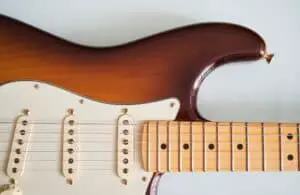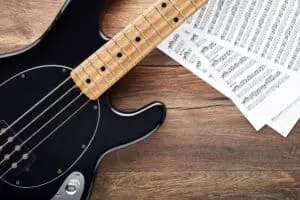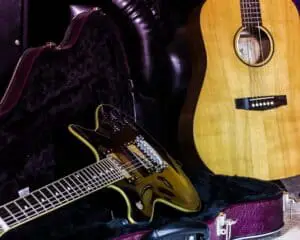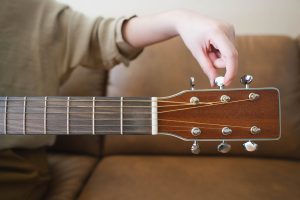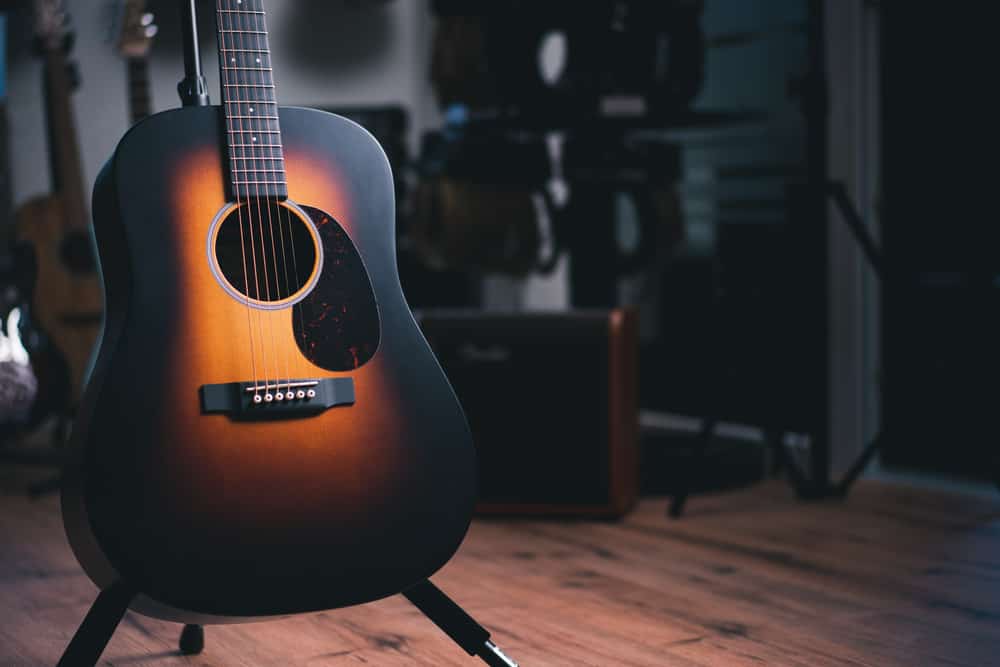
Selecting a good guitar to buy is almost as complex as learning to play one. Ok, we might have been exaggerating a bit there, but the truth remains, selecting a good guitar is a very daunting task.
At that moment, you start to ask yourself a million questions. The color? The size? The model? All these thoughts start to flood your head, and if you’re not adequately prepared, you might run out of your local store or leave that online retailer.
But to be fair, your mild paranoia is justifiable. A good guitar is more than just an instrument, it’s part of the guitarist’s life and something they’ll cherish dearly. So wanting to choose a good guitar for yourself is entirely understandable.
What makes a good guitar?
Different factors influence the quality of a guitar, but generally, a good guitar is defined by the quality of its tonewood, effectiveness of its hardware, tuning, strings, neck, and cost.
However, there’s more to a good guitar than the summary above. Here, we’ll look into these factors and how they help shape a quality guitar. We’ll also share some tips on selecting a guitar you’ll enjoy playing.
Qualities That Make a Good Guitar
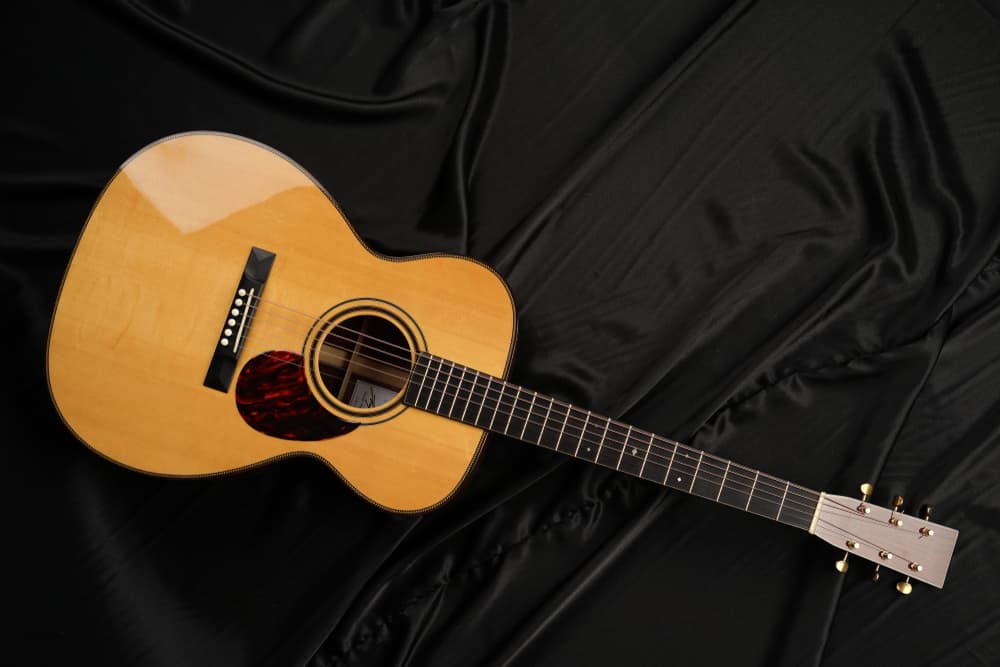
Understanding the factors that make a guitar good can go a long way in ensuring you select the right one for yourself. Here are some things you can use to measure a guitar’s quality.
Tone Wood

Wood makes up about 90% of an acoustic guitar. In fact, when you exclude the electronics and strings, the entire sound of a guitar is dependent on the quality of wood used. That’s why it’s utterly important a guitar is made with the right type of wood.
Generally, the most commonly trusted wood types for guitar construction are spruce, Mahogany, ash, rosewood, rosewood, and maple. Each of these woods has its special effects.
For example, maple gives a bright sound as opposed to the warm timbre sound you’ll get when you use a guitar made of Mahogany.
Asides from their influence on the sound, the quality of tonewood will also determine the durability of your guitar. While some offer the best sounds, a little fall can leave you with cracks in your guitar’s body. Guitars made of Mahogany are usually the most durable guitars.
Tonewood also affects the weight of the guitar. Yes, a good guitar should have a great sound, but it shouldn’t be a burden to carry. A heavy guitar will only lead to you developing bad playing techniques. You’ll also find it difficult to play the instrument for a long stretch.
Mahogany guitars offer durability but also weight. Guitars made out of basswood are the lightest. They are also the cheapest because of how common basswood is.
Lastly, a good guitar should be made out of tonewood with good tonal properties and durability.
Strings

A guitar is nothing without its strings. When you pluck a guitar’s string, the vibration generated is resonated throughout the guitar’s body and comes out as pleasing sounds. So the quality of the string will determine the quality of vibrations and sound.
There are primarily two types of guitar strings: steel strings and nylon strings. Nylon strings are softer on the fingers but cannot be used to play certain genres. They are mostly used by players new to the guitar.
On the other hand, steel strings are for harder and louder sounds; they are also harder on the finger. If you’re not too comfortable starting with steel guitar strings, you can use nylon strings and switch later. Some guitars have provisions for strings to be changed interchangeably.
String Gauges
The gauge of a guitar string also plays a role in the type of sound your guitar produces. Thicker strings will generally make louder sounds due to the increased tension with their mass. They have a fuller tone and more sustain.
Thinner strings are less loud due to lower tension. However, they are preferred by most guitarists because they make soloing easier.
Hardware

Many guitarists overlook the importance of hardware like saddles, bridges, and tuning pegs to the sound of your guitar.
That’s why elite guitar manufacturers like PRS design to make their own tuners and nuts; the significance of hardware on tuning and sound is something they can’t overlook.
Tuning Pegs
Tuning Pegs are those knobs on your guitar headstocks that help you tune your guitar. They are also responsible for keeping your guitar in tune.
Quality tuning pegs are supposed to perform these functions excellently because the ability of a guitar to stay in tune is one of the many qualities people look out for.
Bridge
A bridge holds the string at the lower end of the guitar. The main function of the bridge is to keep the strings above the fretboard.
Most bridges have saddles on top of them. The guitar’s strings rest on them, and they receive the vibrations from the strings and transfer them down to the bridge.
The bridge then transfers the string vibrations to the guitar’s body. Without this process, it will be impossible for you to produce any sound with the guitar.
Luckily, some guitars allow the modification of hardware. So you can upgrade to better ones.
Neck
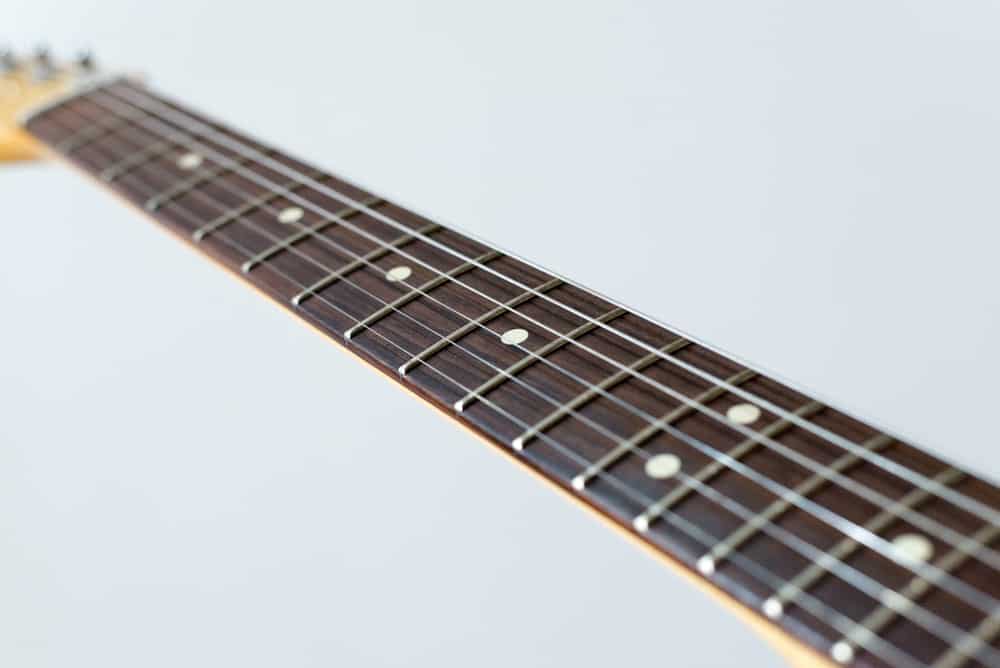
You know how we as humans can’t do without our necks; the case is the same for guitars. There are three types of necks, and each type will define the guitar’s sustain, playability, and stability. We’ll briefly look at these types.
Bolt-On Neck
They are the most common among guitars because of their low price. They are very easy to produce and involve the bolting of the neck to the guitar’s body with the help of bolts, recessed joints, or screws.
Guitars with bolt-on necks have low sustain and stability.
Set Neck
Unlike the bolt-on neck, set necks are joined to the guitar through the help of strong wood glue. To ensure a seamless and non-shaky fit, the neck is clamped to the body while the glue dries. They cost more than bolt-on necks and have better sustain.
A guitar’s sustain is measured by how long the strings vibrate after they are plucked.
Through Neck
Through neck or neck through are the most expensive of the three. The same wood is used for both the body and neck in neck-through guitars. There’s no need for glue or bolt joining.
As expected, they have the best sustain and stability. The only downside to neck-through guitars is that once there is a problem with the neck, you’ll find it difficult to repair it.
The Bottom Line
Truthfully, you can never pinpoint a single factor that determines whether a guitar is good. However, every guitar must have some key things that prove its quality.
The wood used in construction, the type and gauge of strings, the type of neck, and the hardware on the guitar will determine if it’s good or not.
Whether you’re a seasoned professional or just a beginner, these points should help you when choosing a guitar to buy.

